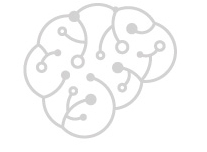


MindLab offers unique treatments with STARSTIM tCSstimulation device encompassing software with the purpose of monitoring and enhancing brain health. The device is used to treat depression, anxiety, insomnia, chronic pain, attention span, mathematical abilities, problem solving, memory and coordination.
MindLab also offer individual and group therapy for all psychiatric conditions depression, anxiety, OCD, psychotic disorders, couple therapy. Cognitive-behavior therapy (CBT), EMDR(eye movement desensitization reprocessing. VR (virtual reality therapy) with Limbix,https://www.limbix.com/, VR platform designed for mental health clinicians, for treating phobias, social anxiety disorder and also for mindfulness and relaxation.
Note: all information disclosed and shared is under confidentiality and total discretion throughout the whole process.
Tina Temelkovska, MD is general adult psychiatrist in Skopje and also specializes in CBT (cognitive behavior psychotherapy), EMDR therapy, tCS (transcranial current stimulation), VR (virtual reality) therapy.
MD Temelkovska is experienced as a psychiatrist in Skopje. She finished her specialization in psychiatry in Skopje 2012, and took part of her education in clinical psychiatry and psychotherapy in Ljubljana, Slovenia and Belgrade, Srebia. MD Temelkovska also holds Training in tDCS, transcranial direct current stimulation in Neuroelectrics, Barcelona and Neuromodulationlab., Singapore. Education in CBT in Zagreb (HUBIKOT – Croatia), education in EMDR in Zagreb in Austrian-Croatian training center.
Copyright Reserved © MindLab 2017
. contact@mindlab.mk . +38970331625
MindLab is founded by Tina Temelkovska MD in January 2018 to provide psychiatric and psychological assessment, diagnosis and treatment of individuals with mental health problems.
The lab provides contemporary treatments incorporating latest breakthrough technology in medical and psychiatric science.


Our brains constantly change with every new experience and thought. The modulation of the brain and the nervous center with noninvasive electrical stimulation can create beneficial, positive changes in the way we think, move, and feel.

Our brains constantly change with every new experience and thought. The modulation of the brain and the nervous center with noninvasive electrical stimulation can create beneficial, positive changes in the way we think, move, and feel. Neuromodulation stimulates neuroplasticity, which can result in a physical and mental transformation.
Body Electric is based on the understanding that our body’s electricity is a natural part of our body’s energy ecosystem. We are electric.
Body Electric is a terminology for research in neuromodulation and neuroplasticity to better utilize our body’s energy of natural electrical signals to strengthen neural connections. This results in increased neural communication that allows our bioelectric selves to perform better.
Body Electric recognizes that the mind is not simply a place, but the synchronized activity of the body and the brain, which need to work together for optimal performance. The language of our thoughts is the conversation of 86 billion neurons throughout our body. It is a fluid dialogue of trillions of synapses that pulse in the brain, body, and mind in waves of electrical data. These waves of data can be modulated by noninvasive electrical stimulation, which can help facilitate healing, improve recovery, or optimize physical performance and mental acuity.

tDCS stands for Transcranial Direct Current Stimulation and is a form of neurostimulation (also known as neuromodulation) where very low levels of constant current are delivered to specifically targeted areas of the brain, often producing profound results. It was originally developed to help patients with brain injuries such as strokes, however tests on healthy adults demonstrated that tDCS can increase cognitive performance on a variety of tasks, depending on the area of the brain being stimulated. Scientific studies have shown that tDCS has the ability to enhance language and mathematical ability, attention span, problem solving, memory, and coordination. In addition, tDCS has also been documented as having impressive potential to treat depression, anxiety, PTSD, as well as chronic pain. The product we use in Mindlab for brain stimulation is from the company Neuroelectrics and it is called STARSTIM 8. http://www.neuroelectrics.com/products/starstim/starstim-8/
How much power should be used?
The vast majority of studies conducted with this technology utilize current within the 0.5 – 2.0mA range, as do our product. Depending on the application, it is generally believed that higher current sessions produce effects that last longer after the end of stimulation.
How long should a session last?
The general consensus is anywhere between 15 to 30 minutes, with the most common professional research sessions lasting 20 or 30 minutes. Additionally, in clinical research, it seems that a five-minute period of stimulation is the minimum requirement to produce tDCS effects that last after the session is over.

Eye Movement Desensitization and Reprocessing, or EMDR, is a powerful new psychotherapy technique which has been very successful in helping people who suffer from trauma, anxiety, panic, disturbing memories, post traumatic stress and many other emotional problems. Until recently, these conditions were difficult and time-consuming to treat. EMDR is considered a breakthrough therapy because of its simplicity and the fact that it can bring quick and lasting relief for most types of emotional distress.
EMDR is the most effective and rapid method for healing PTSD (Post Traumatic Stress Disorder) as shown by extensive scientific research studies.
The EMDR therapy uses bilateral stimulation, right/left eye movement, or tactile stimulation, which repeatly activates the opposite sides of the brain, releasing emotional experiences that are “trapped” in the nervous system. This assists the neurophysiological system, the basis of the mind/body connection, to free itself of blockages and reconnect itself.
As troubling images and feelings are processed by the brain via the eye-movement patterns of EMDR, resolution of the issues and a more peaceful state are achieved
EMDR therapy can help clients replace their anxiety and fear with positive images, emotions and thoughts.
What problems are helped by EMDR?
| loss of a loved one car accident fire work accident assault robbery rape natural disaster injury illness witness to violence childhood abuse victims of violent crimes trauma |
depression anxiety or panic phobias fears childhood trauma physical abuse sexual abuse post traumatic stress bad temper overwhelming fears panic attacks low self-esteem |
EMDR is a natural process. The client and the therapist become partners on a journey to help move traumatic and blocked energy. Together they work to transcend and free up the energy, so the client can return to their natural grounded state of being. The goal of this work is to help the client heal, so they can return to their life in peace.

Virtual reality therapy, also known as, virtual reality exposure therapy, and computerized CBT, is the use of virtual reality technology for psychotherapy. Patients receiving virtual reality therapy navigate through digitally created environments and complete specially designed tasks often tailored to treat a specific ailment. Technology can range from a simple PC and keyboard setup, to a modern virtual reality headset. It is widely used as an alternative form of exposure therapy, in which patients interact with harmless virtual representations of traumatic stimuli in order to reduce fear responses. It has proven to be especially effective at treating PTSD, different kind of phobias and anxiety disorders. In psychiatric private practice- dr. Tina Temelkovska, Mindlab we use, modern, specially designed VR platform from Limbix. Limbix VR enables patients to interact with people and places in authentic, virtual environments. Patients can face their fears, practice conversations, visit remote locations, and relax in tranquil settings. Limbix VR environments are built from panoramic images and videos, rather than animated graphics. This enables our VR scenes to feel more authentic – patients experience true “presence” with visceral sensations. With Limbix we can treat driving phobias, agoraphobia, fear of flying, public spiking, and also relaxation and mindfulness.

Cognitive Behavior Therapy (CBT) is a time-sensitive, structured, present-oriented psychotherapy directed toward solving current problems and teaching clients skills to modify dysfunctional thinking and behavior.
CBT is a psychotherapy that is based on the cognitive model: the way that individuals perceive a situation is more closely connected to their reaction than the situation itself.
One important part of CBT is helping clients change their unhelpful thinking and behavior that lead to enduring improvement in their mood and functioning.
CBT uses a variety of cognitive and behavioral techniques, but it isn’t defined by its use of these strategies. It is used to help treat a wide range of issues in a person’s life, from sleeping difficulties or relationship problems, to drug and alcohol abuse or anxiety and depression, OCD,
PTSD, phobias, eating disorders. CBT works by changing people’s attitudes and their behavior by focusing on the thoughts, images, beliefs and attitudes that are held (a person’s cognitive processes) and how these processes relate to the way a person behaves, as a way of dealing with emotional problems.
An important advantage of cognitive behavioral therapy is that it tends to be short, taking five to ten months for most emotional problems. Clients attend one session per week, each session lasting approximately 45 minutes. During this time, the client and therapist are work together to understand what the problems are and develop new strategies for tackling them. CBT introduces patients to a set of principles that they can apply whenever they need to, and that’ll last them a lifetime.

Muse : the brain sensing headband will elevate your meditation experience. It gently guides
your meditation through changing sounds of weather based on the real- time state of your
brain. This allows you to obtain a deeper sense of focus and motivates you to build a highly
rewarding practice. Meditation has been scientifically shown to reduce symptoms
associated with stress, depression and anxiety as well as improve focus, performance and
quality of life.
Muse is the first tool in the world that gives you accurate, real- time feedback on what is
happening in your brain when you meditate.
Experience all the benefits of meditation- such as relaxation, improved mood and reduced
stress, only with MUSE.

Halo Sport is neurostimulator that accelerates training improvements in skill, strength and endurance.
Halo Sport is designed to make your training or practice more efficient by improving your brain’s natural plasticity. By applying a mild electric field to the motor cortex, Halo’s Neuropriming technology induces a state of “hyperplasticity.” When you train in a hyperplastic state, the brain’s normal fine-tuning process occurs more rapidly — meaning better results from each practice rep.
What is neuropriming?
Neuropriming is the process of using electrical stimulation ( such as transcranial direct current stimulation, or tDCS ) to increase plasticity in brain prior to an activity. This process decreases the amount of input required for neurons to fire, and helps neurons fire together, enabling more rapid strengthening of connections in the brain. When paired with quality training, this results in increased strength, explosiveness, endurance and muscle memory.
It is used worldwide by the professional sport teams, athletes, musicians, artists.
Our brains constantly change with every new experience and thought. The modulation of the brain and the nervous center with noninvasive electrical stimulation can create beneficial, positive changes in the way we think, move, and feel.

07 Dec
Welcome to WordPress. This is your first post. Edit or delete it, then start writing! https://spuntolab.it/
Read more
 Vasil Gjorgov.31/l-lok.20, Skopje
Vasil Gjorgov.31/l-lok.20, Skopje  +38970331625
+38970331625  contact@mindlab.mk
contact@mindlab.mk  Monday : 11:00 - 19:00
Monday : 11:00 - 19:00 Copyright Reserved © MindLab 2017
Designed and Developed by: Piksel